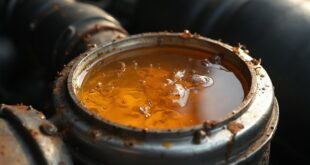Ceramic and organic brake pads differ in several key aspects. Organic pads are made from non-asbestos materials like carbon, rubber, and resin, making them quieter and more affordable. In contrast, ceramic pads use a denser material with copper fibers, offering superior durability and performance. While organic pads may wear out more quickly and produce less dust, ceramic pads withstand higher temperatures better. These differences impact cost, maintenance, and overall performance in various driving scenarios, leading to informed choices for drivers. More insights await on these options.
Overview of Brake Pad Types
When considering brake pads, it is essential to understand the primary types available: organic and ceramic.
Organic brake pads are typically made from non-asbestos materials and are known for their affordability and quieter operation. They generate less dust, making them a popular choice for everyday vehicles.
In contrast, ceramic brake pads, which incorporate dense ceramic material and copper fibers, offer longer lifespan and superior performance. They produce minimal brake dust and require less effort to engage.
Both types, however, are not designed for heavy towing or high-performance applications, emphasizing the need for careful selection based on driving needs.
Composition and Materials
Brake pads are primarily composed of distinct materials that directly influence their performance and durability. Organic brake pads typically utilize non-asbestos materials, including carbon, rubber, Kevlar, fiberglass, and resin. In contrast, ceramic brake pads are crafted from dense ceramic material infused with copper fibers, enhancing their longevity and effectiveness.
| Material | Type |
|---|---|
| Carbon | Organic |
| Ceramic | Ceramic |
| Copper Fibers | Ceramic |
Understanding these compositions helps consumers make informed choices, balancing cost and performance while considering the emotional investment in their vehicle's safety.
Performance Characteristics
Performance characteristics of brake pads considerably impact vehicle safety and driving experience.
Ceramic brake pads excel in durability, offering consistent performance with less fade under high temperatures. They require less pedal effort, enhancing responsiveness.
In contrast, organic brake pads provide quieter operation and minimal dust, making them suitable for everyday driving. However, they may wear out more quickly and lose effectiveness under heavy loads or high temperatures.
Both types have limitations; while ceramic pads are ideal for regular use, organic pads cater to budget-conscious consumers.
Cost Comparison
While the choice between ceramic and organic brake pads often hinges on performance characteristics, cost plays a crucial role in the decision-making process.
Organic brake pads are generally more affordable, making them a popular choice for budget-conscious consumers. Conversely, ceramic brake pads tend to have a higher upfront cost due to their advanced materials and longer lifespan.
However, this initial investment may offset the need for frequent replacements. Ultimately, the cost comparison reveals that while organic pads are economical, the durability and performance of ceramic options may justify their higher price for some drivers.
Maintenance and Longevity
Regular maintenance plays an essential role in maximizing the longevity of both ceramic and organic brake pads.
For ceramic pads, routine inspections can help guarantee peak performance, as they typically last longer than their organic counterparts.
Organic pads, while more affordable, may require more frequent replacements due to their quicker wear.
Properly maintaining brake systems, including regular cleaning and timely replacement of worn components, enhances the lifespan of both types.
Additionally, driving habits notably impact wear rates; gentle braking can extend pad life, whereas aggressive driving accelerates degradation.
Ultimately, consistent upkeep is crucial for achieving the best performance and longevity from either brake pad type.
Frequently Asked Questions
Can I Mix Ceramic and Organic Brake Pads on My Vehicle?
The question of mixing ceramic and organic brake pads arises frequently. Experts generally advise against it, as differing materials may lead to uneven braking performance, decreased safety, and potential damage to the vehicle's braking system.
How Do Weather Conditions Affect Brake Pad Performance?
Weather conditions greatly influence brake pad performance, as extreme temperatures can affect friction levels and wear rates. Rain and snow may reduce effectiveness, while high heat can lead to brake fade, impacting overall safety and reliability.
Are There Specific Brands Recommended for Ceramic or Organic Pads?
The inquiry regarding recommended brands for brake pads involves various options. Consumers often consider brands like Bosch, Wagner, and Akebono for ceramic pads, while organic choices may include Monroe and Raybestos, depending on specific vehicle needs.
How Do I Know When to Replace My Brake Pads?
To determine when to replace brake pads, one should listen for unusual noises, monitor braking performance, check for warning lights, and inspect pad thickness regularly. Safety is paramount, making timely replacement essential for effective vehicle operation.
Can Brake Pads Affect My Vehicle's Fuel Efficiency?
The question of whether brake pads affect a vehicle's fuel efficiency involves understanding the relationship between braking systems and energy consumption. Inefficient brake pads can lead to increased friction, potentially impacting overall fuel economy during operation.
 Car Service Land Coupons for Oil change, Tires, Wheel alignment, Brakes, Maintenance
Car Service Land Coupons for Oil change, Tires, Wheel alignment, Brakes, Maintenance




